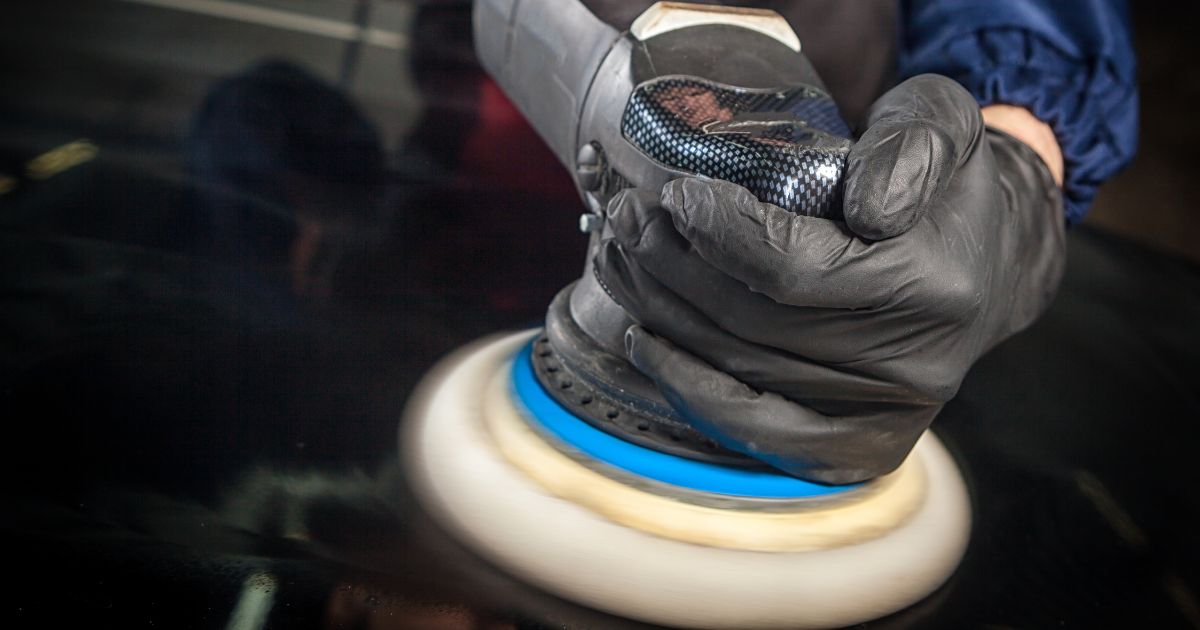Buffing and polishing are two common options for preserving your metal equipment and are a part of paint restoration services. While both procedures may enhance the look and performance of metal surfaces, each works differently, and one method may be more appropriate for a specific piece of equipment than another. We have experts who can give you best advice for Steeltech Electropainting services.
What is Metal Polishing?
Polishing brings a metal object’s surface to a high sheen using a polishing compound and a soft cloth or pad. It aims to give metal objects a uniformly shiny appearance by removing surface scratches, blemishes, and other imperfections.
Polishing metal may be done manually, mechanically, or with abrasive blasting. Machine polishing uses a specialized machine or an automated polishing system. In contrast, hand polishing often uses a rotary tool or a polishing wheel attached to a hand-held electric drill. The method of cleaning and smoothing metal surfaces using a high-pressure spray of abrasive particles like sand, glass beads, or aluminum oxide is known as abrasive blasting. We have one of the best Commercial electrostatic painter in Miami which helps you in giving your metal surfaces a uniform and durable finish.
What Does Metal Buffing Entail?
Metal buffing uses a specialized wheel and compound to enhance the aesthetic and usefulness of a metal surface. Flexible, soft materials, like felt, muslin, or flannel, are often used for the buffing wheel’s surface. A buffing compound is applied to the buffing wheel to help remove flaws and smooth the metal surface.
Vehicle parts, metal furniture, and industrial machinery are buffed routinely to improve appearance and performance. Compared to polishing, buffing produces a more refined surface and is used for delicate finishing tasks.
Polishing: Pros and Cons
Scratches, defects, and other surface imperfections may sometimes be removed from metal by polishing, leaving the metal shiny and smooth. Moreover, metals may be polished quickly and efficiently with a machine or an automated polishing system. You can consult a commercial restoration services provider to know if this service is ideal for your situation.
However, polishing by hand may be labor-intensive, require exposure to harmful chemicals, and take a long time. Also, polishing may be pricey, especially if done by a professional. Not all metal surfaces benefit from polishing since a thin metal coating may be removed throughout the process, reducing the object’s durability.
Pros and Cons of Metal Buffing
Buffing is appropriate for delicate finishing work since it produces a highly polished, mirror-like look without needing as much abrasiveness as polishing. Using a machine or an automated buffing system may make buffing even faster and more effective.
On the other hand, buffing by hand may be time-consuming and necessitate using harmful substances. Buffing may not be appropriate for all metal surfaces since it removes a small layer of metal, thus reducing the object’s strength and durability. Also, buffing might be expensive, particularly if a professional is needed.
Which One Should You Choose?
Buffing and polishing both improve the appearance and performance of metal tools. The best method depends on several factors, such as the kind of metal surface you’re working with, the level of polish you want to achieve, and your available resources.
Your needs and goals will determine the method you will eventually select. Consult a professional metal finisher, knowledgeable supplier, manufacturer, or paint restoration service if you’re unsure which method is best for your project. Contact Steeltech Electropainting today for expert commercial restoration services.

